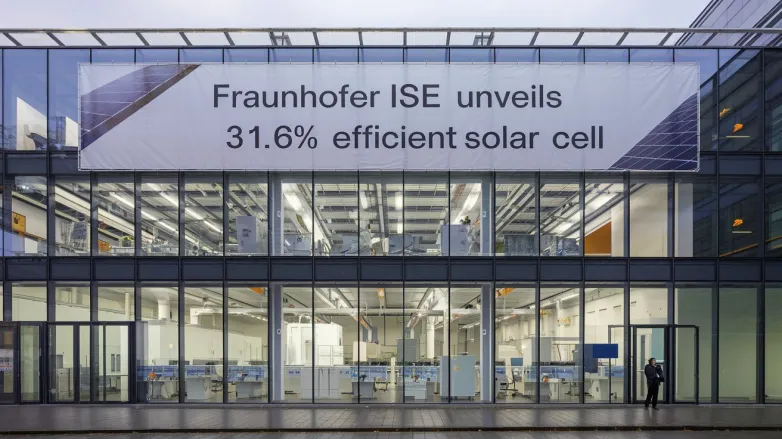Fraunhofer ISE Unveils 31.6% Efficient Solar Cell
- Revolutionizing renewable energy, Germany's Fraunhofer Institute unveils a record-breaking 31.6% efficient tandem solar cell, merging perovskite and silicon for unmatched sunlight absorption.

Scientists at Germany's Fraunhofer Institute for Solar Energy Systems (ISE) have developed a perovskite-silicon tandem solar cell achieving an unprecedented efficiency of 31.6%. This breakthrough combines a textured silicon layer with a perovskite layer, substantially reducing reflection losses and enhancing sunlight utilization. The use of standard silicon as the base layer paves the way for potential industrial-scale manufacturing.
The new tandem solar cell measures 1 square centimeter and employs a unique combined hybrid process to ensure an even application of the perovskite layer on the textured silicon surface. This innovation represents the highest efficiency to date for a solar cell combining these materials through a hybrid deposition method.
How does the new tandem solar cell achieve 31.6% efficiency?
Here are some additional insights into how the new tandem solar cell achieves its remarkable efficiency of 31.6%:
- Layering Technology: The tandem structure stacks two different types of solar cells—perovskite and silicon—allowing them to absorb different parts of the solar spectrum. This dual-layer approach effectively captures more sunlight compared to single-layer cells.
- Advanced Texturing: The silicon layer is not only standard but also textured. This texturing significantly reduces reflection losses by allowing more light to enter the cell, enhancing overall light absorption.
- Perovskite Characteristics: The perovskite layer is known for its high absorption coefficients and tunable bandgap, which enables it to efficiently harness sunlight in the visible spectrum while the silicon layer captures infrared light.
- Optimized Thickness: Researchers have carefully optimized the thickness of each layer to maximize absorption and minimize recombination losses. This precise engineering ensures that both materials effectively contribute to the cell’s overall performance.
- Hybrid Application Method: The unique hybrid deposition method used for applying the perovskite layer ensures uniform coverage over the textured silicon. This is crucial for maintaining consistent performance across the cell and preventing gaps that could lead to inefficiencies.
- Integration with Existing Technology: By using standard silicon, the new design is compatible with existing solar cell manufacturing processes. This compatibility is vital for commercial scalability, significantly reducing the cost and time needed for adoption.
- Reduction of Heat Loss: The tandem configuration effectively minimizes thermalization losses that typically occur in traditional solar cells when excess energy converts to heat instead of electricity, thus enhancing efficiency under a wide range of lighting conditions.
- Potential for Further Improvements: The study suggests that there’s still room for optimizing materials and processes, hinting at future advancements that could push efficiencies even higher as new technologies and methodologies are developed.
- Environmental Benefits: The use of perovskite materials in combination with silicon not only boosts efficiency but also potentially offers lower production costs and reduced environmental impacts compared to traditional photovoltaic materials.
Overall, the innovative combination of techniques and materials in this tandem solar cell is a significant step forward in solar energy technology, promising both enhanced performance and manufacturability.
Also read


